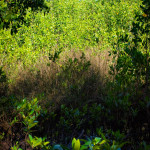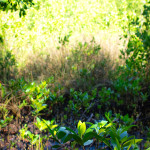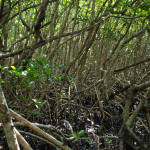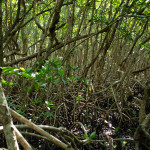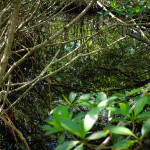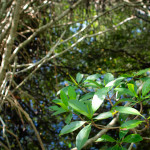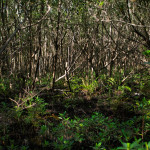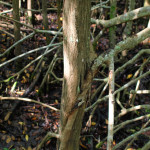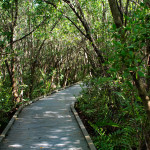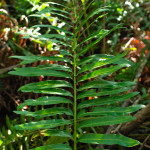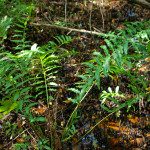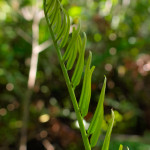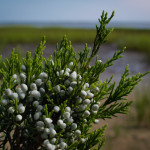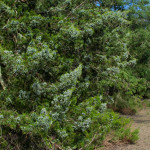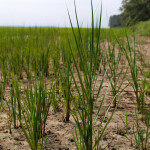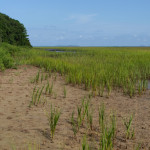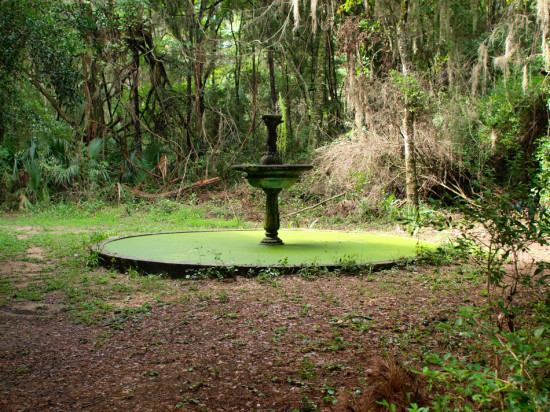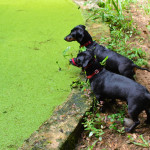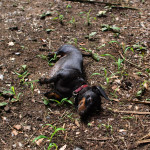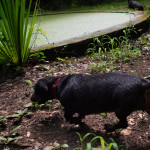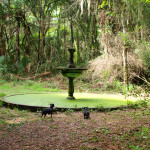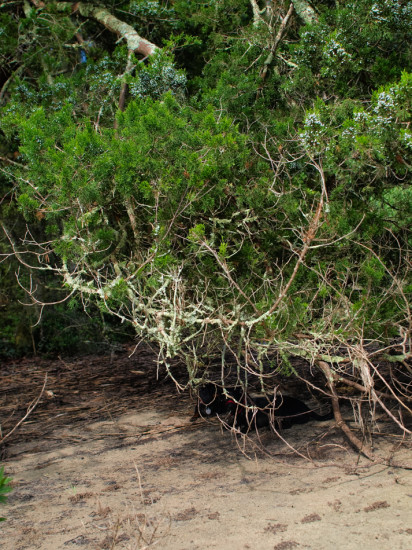Black needle rush to red mangrove succession at 4-mile Cove Ecological Preserve.
Monthly Archives: July 2014
Red Mangrove Expansion
The Red Mangrove, Rhizophora mangle, reaches the ends of its ranged near Cape Coral, Florida, as did the black mangrove. However, climate change has allowed for mangrove range expansion, likely due to a decrease in the frequency of extreme cold events per year (Cavanaugh 2013 PNAS).
Having seen Costa Rican red mangrove, and those at 4-mile Cove pictured here, the lack of cold tolerance in the trees is clear: the Costa Rican mangroves stand much taller and have a lower stem density (# of trees per area) than those in Florida, because of periodic (on the order of decades) frosts or cold events that wipe most of the trees out in Florida.
Mangrove Panorama
Black mangrove
Black mangrove, with their distinctive pneumatophores, were common at Estero Bay Nature Preserve, but (anecdotally) don’t seem to be fairing as well at 4-mile Cove Ecological Preserve, where red mangrove seedlings cover the understory.
Mangrove fern
I think this is a salt-tolerant mangrove fern, Acrostichum aureum, inhabiting the understory of mangroves in southern Florida’s 4-mile Cove Ecological Preserve.
I’ve also seen this species in Costa Rica, where it lines some of the banks at the mouth of Rio Sierpe, and has colonized some wetlands in Guana Caste.
A “fruiting” juniper
Given that the Red Cedar Juniperus virginiana is a gynmosperm, the juniper’s berries are distinct phylogenetically and developmentally from what we commonly call fruits, including true berries.
Golden Silk Orb-weaver
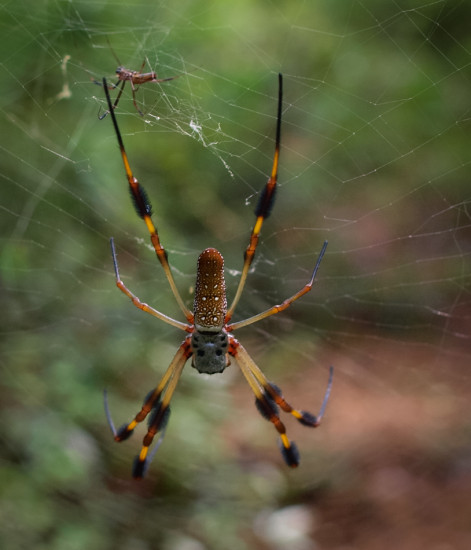 Literally ran into a few of these recently… here’s a large (probably about four inches or the size of your hand’s palm) female Nephila sp. (I’m guessing N. clavipes from Google searches of nearby orbweavers) and one of her hopeful mates. I counted three males associated with this web, and Wikipedia claims that these spiders are often parasitized by kleptoparastic Argyrodes spiders that steal captured prey from her web.
Literally ran into a few of these recently… here’s a large (probably about four inches or the size of your hand’s palm) female Nephila sp. (I’m guessing N. clavipes from Google searches of nearby orbweavers) and one of her hopeful mates. I counted three males associated with this web, and Wikipedia claims that these spiders are often parasitized by kleptoparastic Argyrodes spiders that steal captured prey from her web.
Smooth Cordgrass
I haven’t captured the flowers, fruits, or seeds yet, but Spartina alterniflora is the other dominant plant species in the salt marshes around Coastal Georgia.

